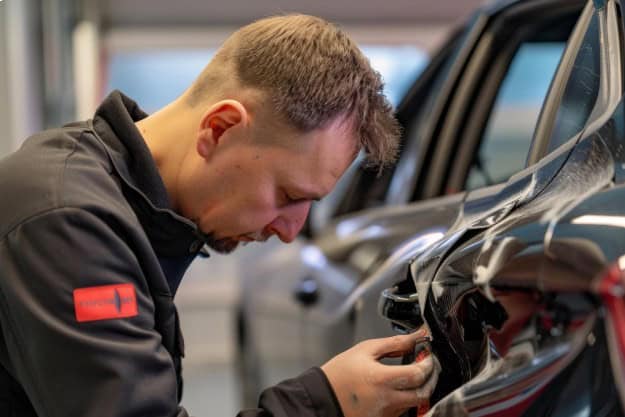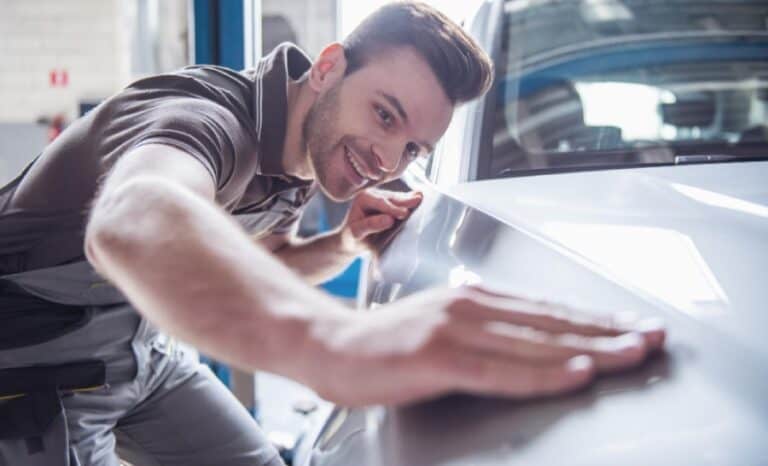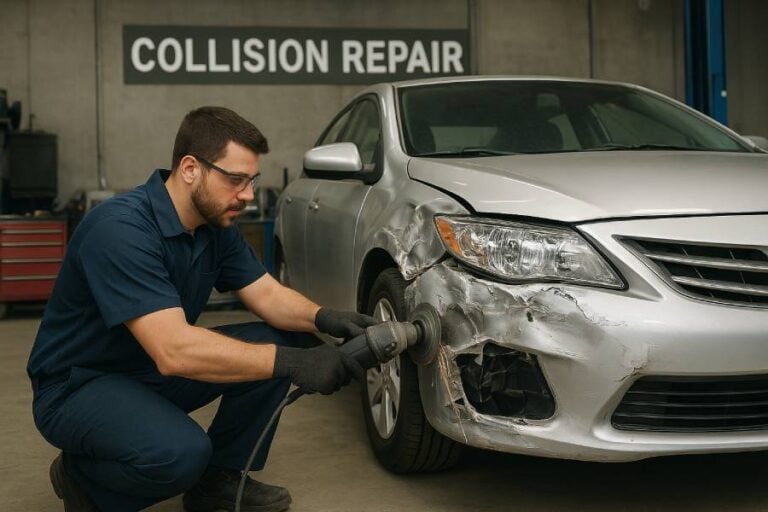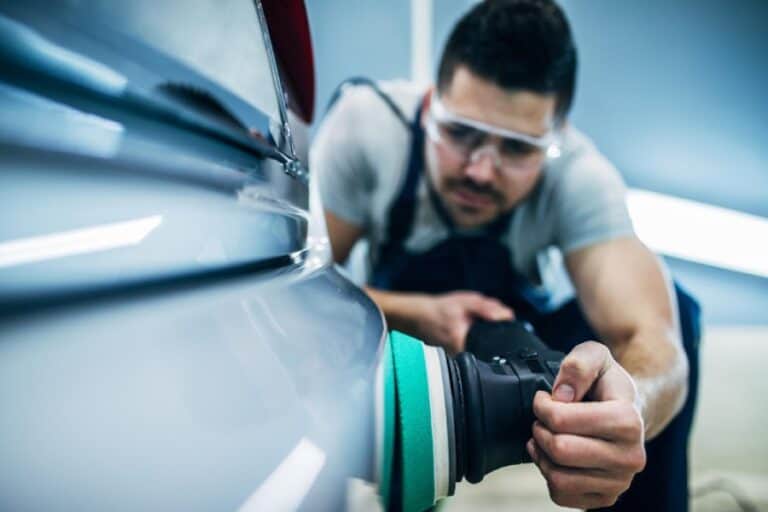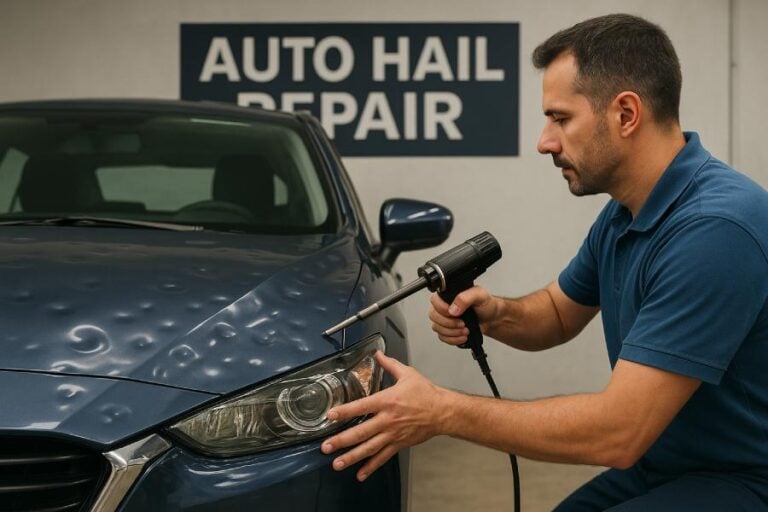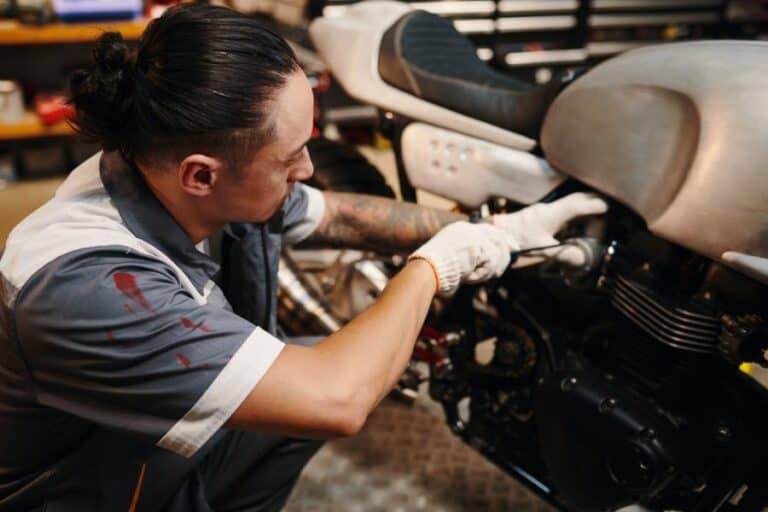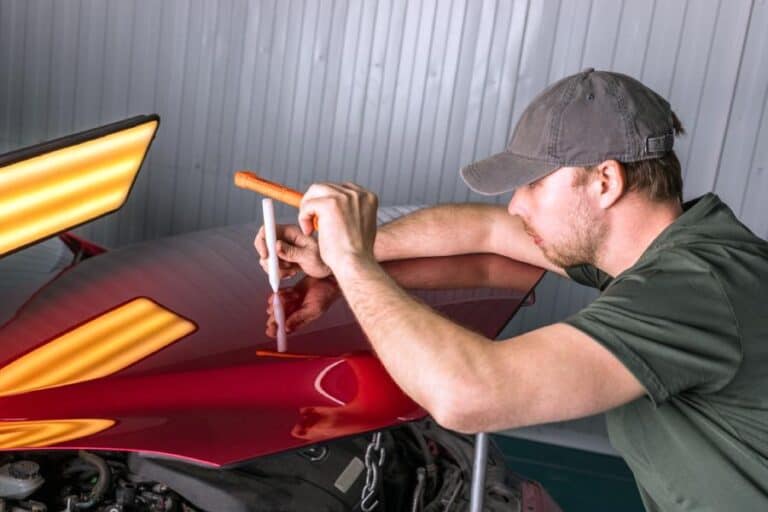Restoring Your Vehicle After Hail Damage: A Comprehensive Guide
Hailstorms are an erratic natural phenomenon that can inflict considerable harm on automobiles. After a hailstorm occurs, your car may resemble a golf ball with its numerous dents, shattered windshields, and peeling paint. The level of destruction often depends on the size and velocity of the hailstones; however, regardless of the damage’s severity, it is crucial to repair your vehicle to preserve its worth and visual attractiveness.
This detailed manual will lead you through the process of evaluating hail damage, exploring your repair choices, managing insurance claims, and selecting the appropriate experts to restore your vehicle to its best condition.
Assessing the Damage
The initial action to take after a hailstorm has damaged your car is to conduct a comprehensive evaluation of the harm done. This evaluation will give you insight into the level of dent repairs required and serve as a foundation for submitting an insurance claim.
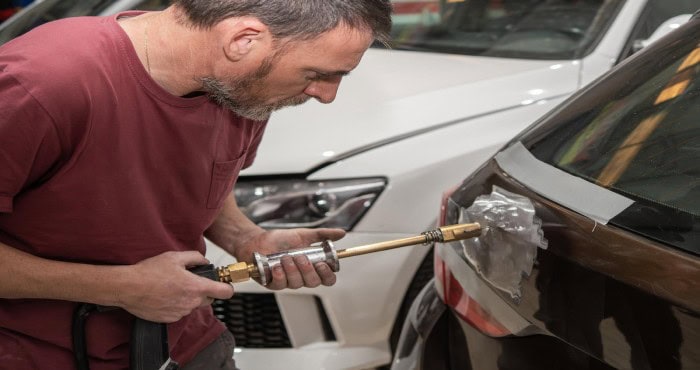
Exterior Inspection
Start by inspecting the outside of your car for any noticeable damage. Check for dents, scratches, and paint chips on the body panels, roof, trunk, and hood. Focus particularly on flat areas since they are more vulnerable to hail damage. Utilize a flashlight or sunlight to illuminate any flaws that might be difficult to spot in dim lighting.
Glass Damage
Afterward, examine every window—this includes the windshield, side windows, and rear window—for any signs of cracks or chips. Hail can create tiny fractures in the glass that might not be easily noticeable at first. If these issues are not addressed promptly, they could worsen over time and result in more expensive repairs.
Paint Damage
Inspect the paint for any damage, such as chips or scratches from hail. Even minor imperfections can allow moisture to reach the metal beneath, which may result in rust and additional damage if not taken care of quickly.
Interior Inspection
Although hail mainly impacts the outside of your car, it’s crucial to also examine the interior. Check for any water leaks or damage to the upholstery that could have occurred due to shattered windows or sunroofs.
Understanding Repair Options
After assessing the extent of the damage, the subsequent step is to investigate the available repair alternatives. Your choice of method will be influenced by how serious the damage is, your financial constraints, and if you intend to submit an insurance claim.
Paintless Dent Repair (PDR)
Paintless Dent Repair (PDR) is an effective and economical solution for fixing hail damage. This approach utilizes specialized instruments to gently push out dents from beneath the vehicle’s panels, ensuring that the paint remains untouched. PDR works best for small to medium-sized dents and is frequently favored as it maintains the vehicle’s original paint and finish.
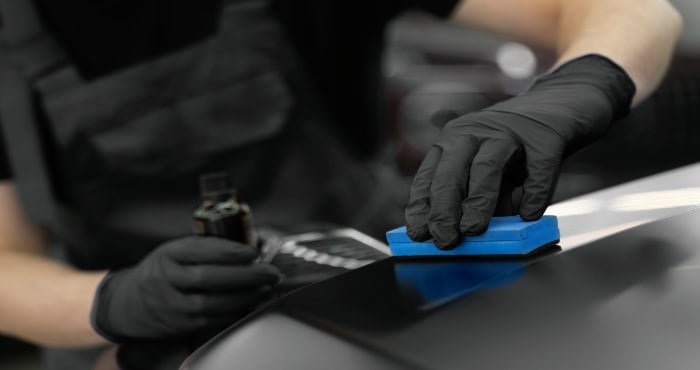
Conventional Body Repair
In cases of significant damage, traditional body repair techniques might be required. This process includes applying body filler to the dents, smoothing the surface through sanding, and repainting to blend with the vehicle’s existing color. Although this method tends to take more time and incur higher costs compared to dent repair boise, it is frequently the sole solution for substantial dents, pronounced creases, or regions with considerable paint deterioration.
Glass Replacement
In cases of significant damage, traditional body repair techniques might be required. This process includes applying body filler to the dents, smoothing the surface through sanding, and repainting to ensure color consistency with the rest of the vehicle. Although this approach tends to take more time and cost more than paintless dent repair (PDR), it is frequently the sole solution for larger dents, pronounced creases, or regions with considerable paint deterioration.
DIY Repairs
If you’re dealing with minor hail damage, you might consider attempting a DIY fix. There are numerous kits on the market that promise to assist in removing dents at home. Although these can work for tiny dents, they typically do not match the precision and quality of repairs done by professionals. Moreover, using these kits incorrectly could cause additional harm, so it’s important to be careful.
Navigating Insurance Claims
Comprehensive auto insurance policies usually include coverage for hail damage, yet the claims process can often feel overwhelming. It’s essential to familiarize yourself with the steps involved to guarantee that your repairs are funded and that you obtain adequate compensation.
Reviewing Your Policy
Prior to submitting a claim, take the time to examine your insurance policy to ensure it provides comprehensive coverage and to familiarize yourself with your deductible. This deductible represents the portion you must cover personally before your insurance benefits activate. Should the repair expenses be equal to or below your deductible, you might opt to handle the dent repair costs on your own rather than filing a claim.
Documenting the Damage
Capturing the extent of the damage is essential for filing a claim. Ensure you take sharp, thorough photographs of all impacted locations, focusing on close-ups of any dents, fractures, and paint damage. This visual record will act as proof when you file your claim and may assist in avoiding conflicts with your insurance provider.
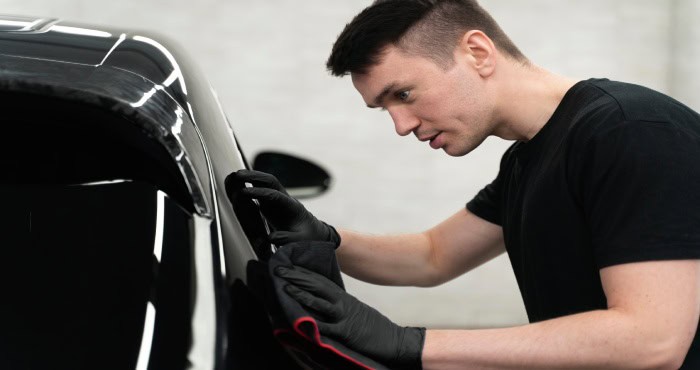
Filing the Claim
After the hailstorm, reach out to your insurance provider promptly to inform them about the damage. Make sure to share photos and a thorough account of what was affected. It’s probable that your insurer will send an adjuster to evaluate the damage and estimate repair costs.
Working with the Adjuster
An insurance adjuster will evaluate your car and give you a repair cost estimate. Being there for the inspection is crucial so that all damages are documented and you can raise any queries. Should you find yourself in disagreement with the adjuster’s evaluation, you are entitled to obtain a second opinion or discuss the estimate further.
Choosing a Repair Shop
Often, your insurance provider may suggest a specific repair shop; however, you are not required to follow their recommendation. It is crucial to select a repair facility that specializes in hail damage restoration and has a solid reputation for delivering high-quality results. Additionally, you might inquire whether the shop collaborates directly with insurance companies, as this could simplify the repair process.
Choosing the Right Professionals
Choosing the appropriate experts to repair your car after it has been damaged by hail is essential for optimal outcomes. Regardless of whether you decide on paintless dent repair, traditional methods, or glass replacement, the success of the repairs will significantly rely on the skill level of the technicians involved.
- Researching Repair Shops: Begin by looking into nearby repair shops that focus on hail damage repair. Seek out establishments that have good reviews, relevant certifications, and a proven track record with your specific vehicle’s make and model. Additionally, consider seeking suggestions from friends, family members, or your insurance provider.
- Verifying Credentials: Verify that the repair facility holds the necessary licenses and insurance coverage. The technicians should possess credentials from reputable industry bodies, like the National Institute for Automotive Service Excellence (ASE) or the Inter-Industry Conference on Auto Collision Repair (I-CAR).
- Requesting Estimates: Obtaining quotes from several repair shops is a wise approach to evaluate both costs and services. Exercise caution with establishments that provide prices much lower than their competitors, as this may indicate inferior quality of materials or craftsmanship.
- Reviewing Warranty Options: Inquire about the warranty associated with the repairs. A trustworthy repair shop typically provides a guarantee on both the parts and the labor, ensuring that you can feel confident in the quality of their work and that any problems will be resolved without extra charges.
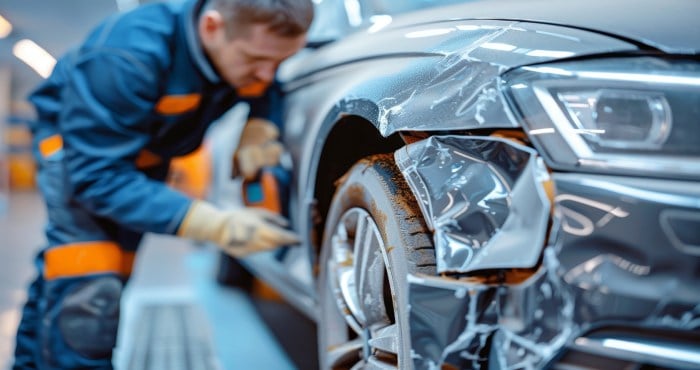
Preventing Future Hail Damage
Although you cannot influence the weather, there are measures you can implement to safeguard your vehicle against potential hail damage in the future.
- Covered Parking: To minimize the risk of hail damage, it’s highly advisable to keep your vehicle in a sheltered location, like a garage or carport. If you lack covered parking at your residence, look for a nearby parking garage with protection or utilize a car cover whenever there’s a prediction of hail.
- Hail Protection Covers: Purchasing a hail protection cover can offer extra safeguarding for your vehicle against hail damage. Constructed from durable, impact-resistant materials, these covers are specifically engineered to cushion the blow from hailstones, thereby reducing the risk of harm to your car.
- Monitoring Weather Alerts: Keep yourself updated on the weather by checking local forecasts and enrolling in weather alert services. If there’s a chance of hail, take steps to safeguard your car, like relocating it to a sheltered spot or applying a hail protection cover.

